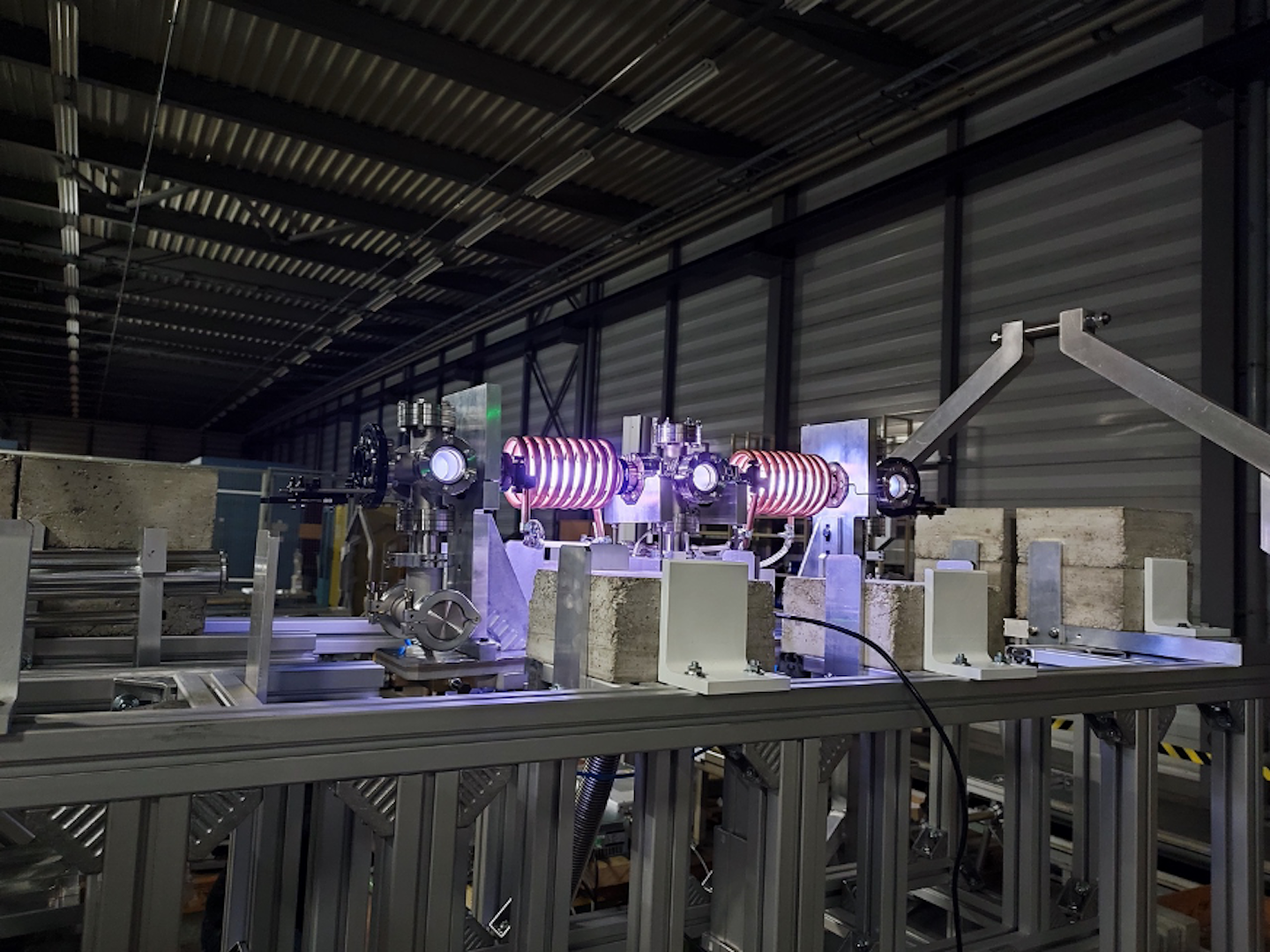Fireball (officially “HRMT-62”), a new experiment at the SPS HiRadMat facility, will receive its first beam this week. It is designed to study the micro-instabilities of a high-intensity electron-positron beam interacting with low-density plasma. The electron-positron beam is produced when a 440 GeV/c proton beam from the SPS impinges on a special target. The resulting beam propagates through the plasma and creates a highly unstable system: fluctuations of the magnetic field in the plasma cause charge separation in the beam, and this separation consequently causes further magnetic fluctuations in the plasma. This gives rise to non-linear phenomena and plasma emissions that have never been studied in this way before.

This study should give new insights into extreme astrophysical phenomena, in particular blazar jets and gamma-ray bursts (GRBs). GRBs are among the most energetic phenomena in the Universe and, even though they have been observed in distant galaxies, the enormous amount of energy they release can disrupt radio communications on Earth – some theories even suggest that they affected the evolution of life on Earth. However, the fundamental physical processes involved in GRBs are still not understood.
“Without the unique HiRadMat facility, it would not have been possible to implement Fireball; it will be the first accelerator-driven experiment of this kind”, says Gianluca Gregori, the experiment’s spokesperson from the University of Oxford. “Fireball will help lift the veil on the microphysics processes that are not observable with satellites or ground-based telescopes and are impossible to simulate numerically.”

The experiment includes various instruments designed to study the formation of plasma instabilities and magnetic fields, in particular a custom-made magnetic spectrometer with a dipole magnet. “In order to power the magnetic spectrometer in a flexible and cost-effective way, along with SY/ABT and SY/EPC groups we disconnected one of the quadrupoles of the HiRadMat beamline and the optics were recalculated”, explains Nikos Charitonidis, HiRadMat facility coordinator. “The collaboration within CERN has once again been key to implementing all the necessary modifications in terms of beam and infrastructure. I’d really like to thank all the CERN groups involved for their collaborative effort in running this unique facility.”
Since its commissioning in 2011, HiRadMat has taken part in several European Transnational Access programmes, which have made the facility accessible to users from all over the world.
_____
For more information on the HiRadMat facility, read the article published for its 10th anniversary.

